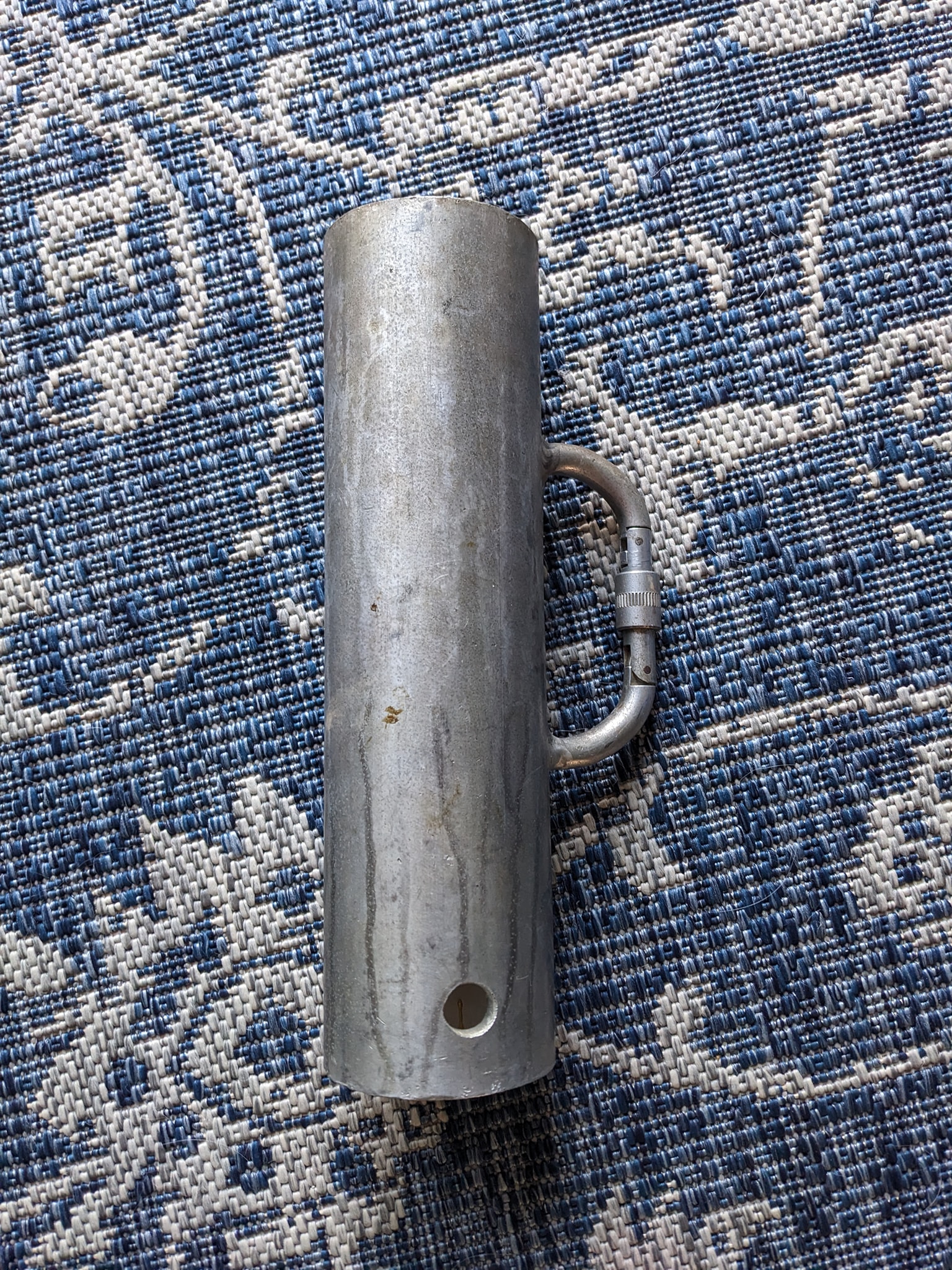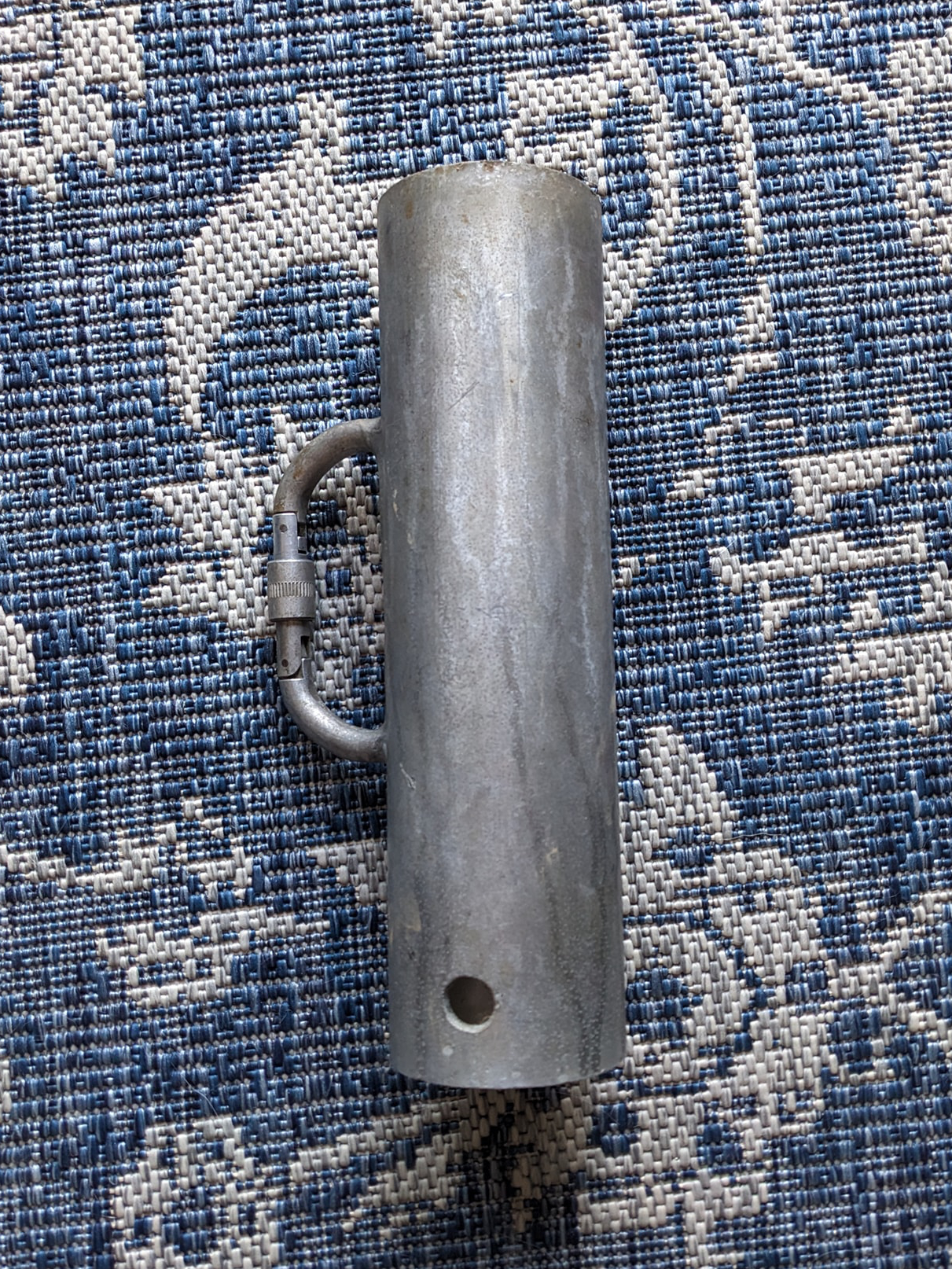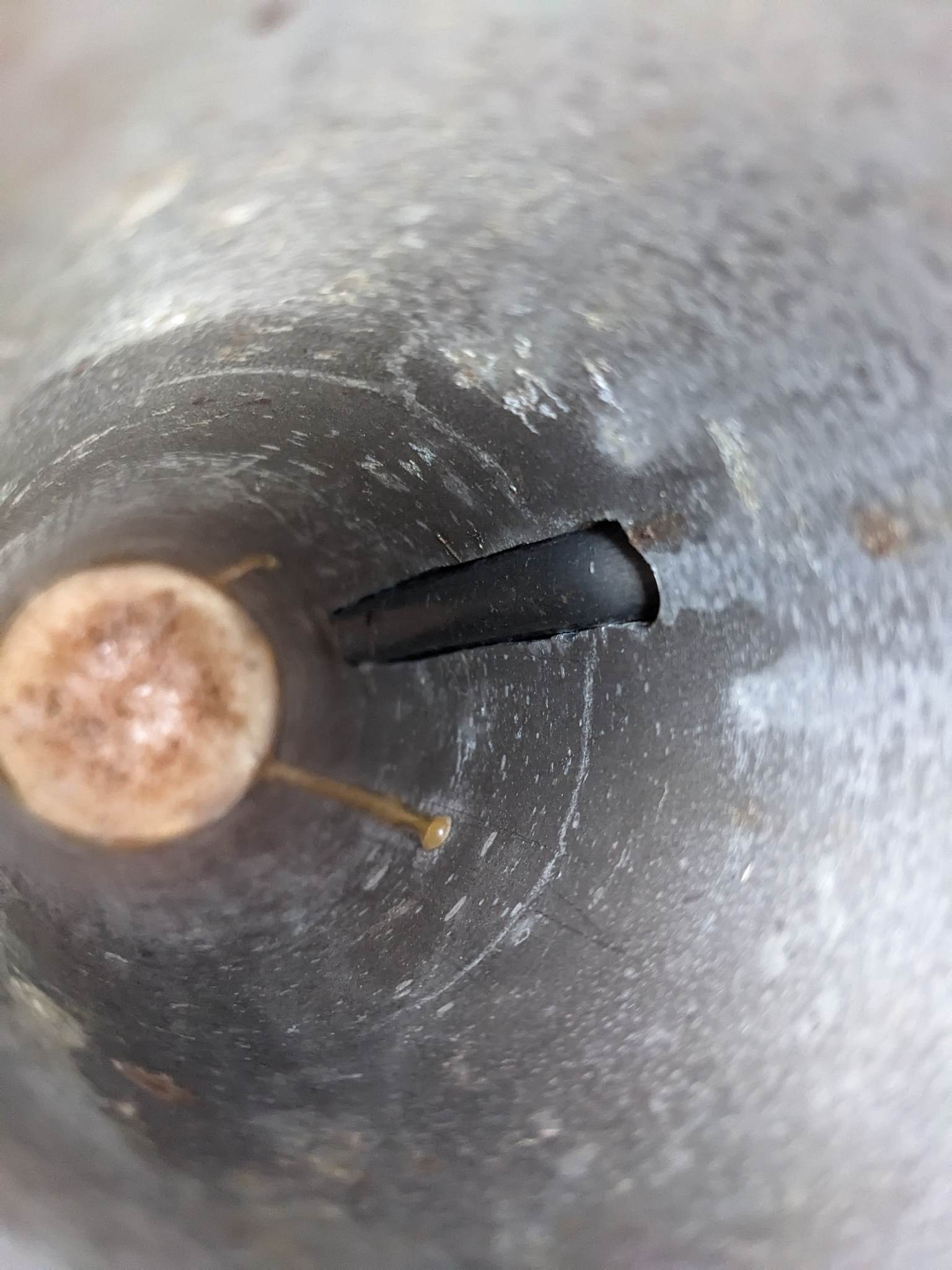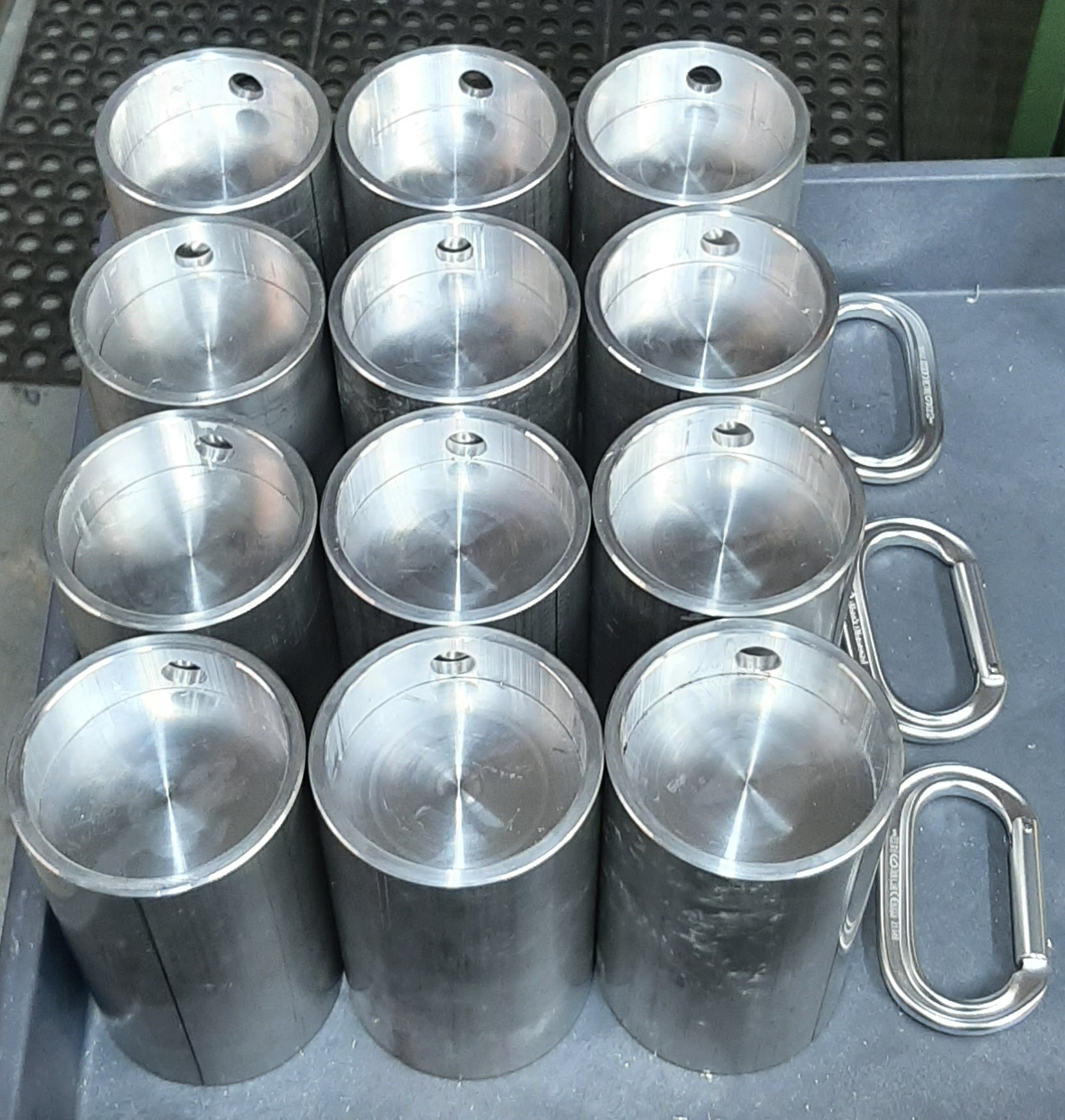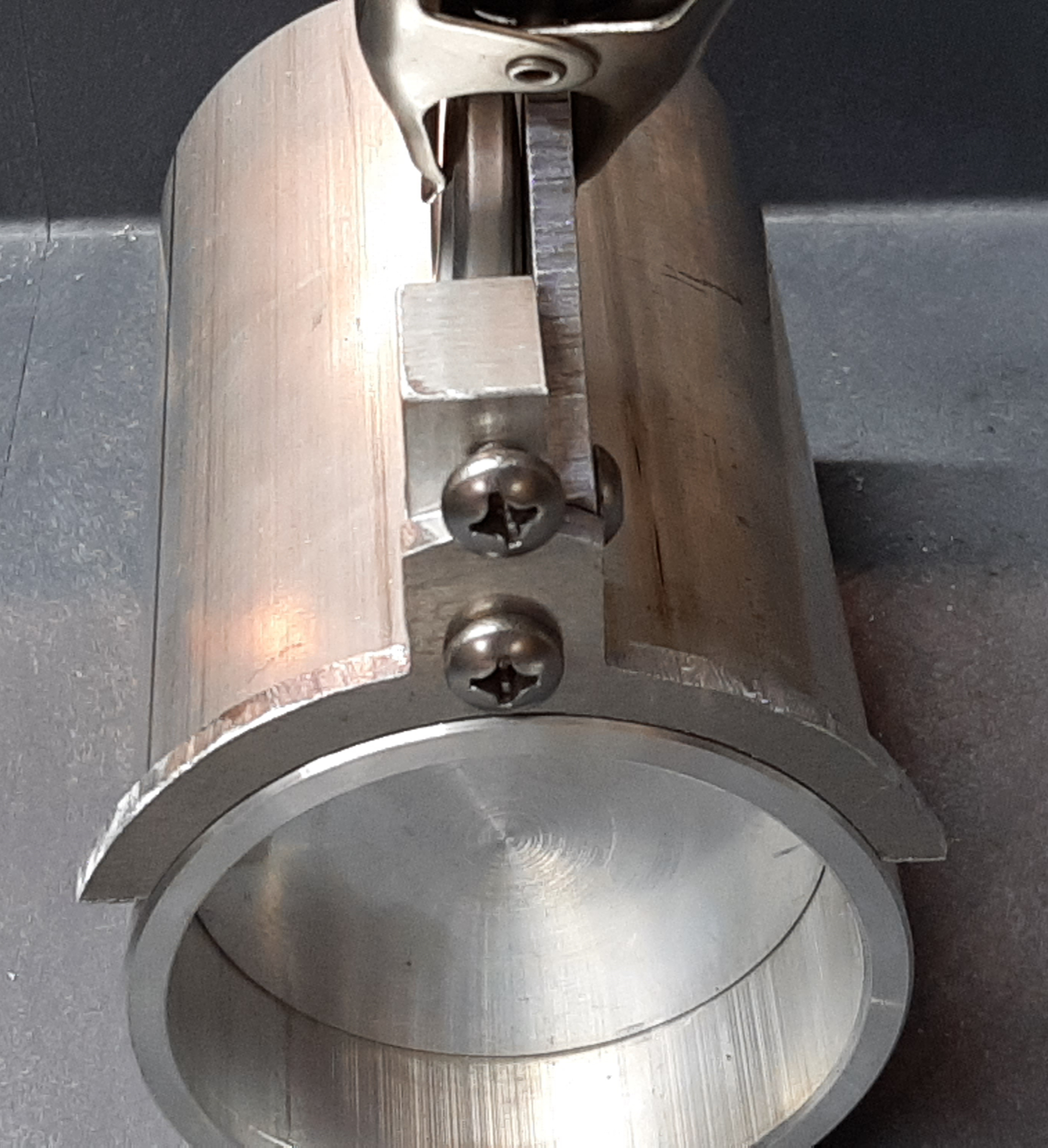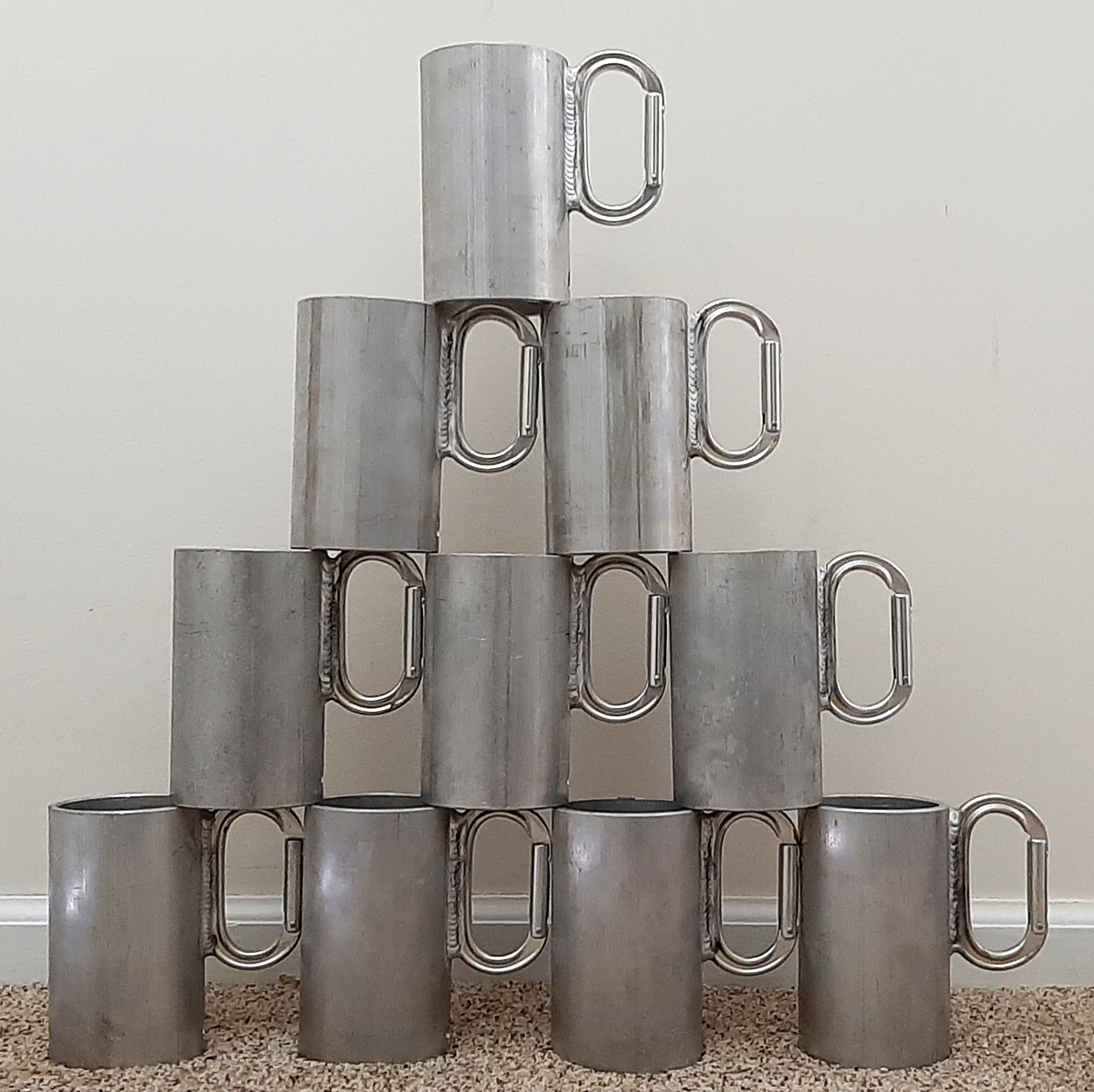Technical Details
I acquired this Rappelestein from Laura Demarest in 2023. It was originally Tom Rea's, and she acquired it from his estate.
Tom's Rappelestein is 266 mm. tall, 120 mm. wide, 73 mm. thick, and weighs 821 g.
This rappelestein consists of 2-1/2" schedule 40 6061 aluminum pipe with a locking carabiner
(probably Eiger) welded on the side, forming a handle. An acrylic disc is glued inside about 1-5/16" (35 mm.) from the bottom. 9/16" (14 mm.) holes drilled on each side provides attachment points for a seat harness carabiner.
The carabiner sits in a slot milled through the tube wall. This simplified construction provides mechanical support for the carabiner, reduces the bump where the rope rides over the inner surface of the carabiner, and makes it harder to clean beer from the interior when I'm finished drinking. I find the latter to be too annoying to offset the mechanical advantages of a penetrating slot.
Rappelestein History
I. Don Shofstall invented the Rappelestein in 1965. The carabiner is welded to a slot in the side of the aluminum tube, and the bottom is an acrylic disc glued in place. I had a chance to buy Don's original at the NSS auction a few years ago, but the price was too steep for my wallet. I hoped that the purchaser would donate it to my collection, but they put it in the NSS museum instead.
 |
 |
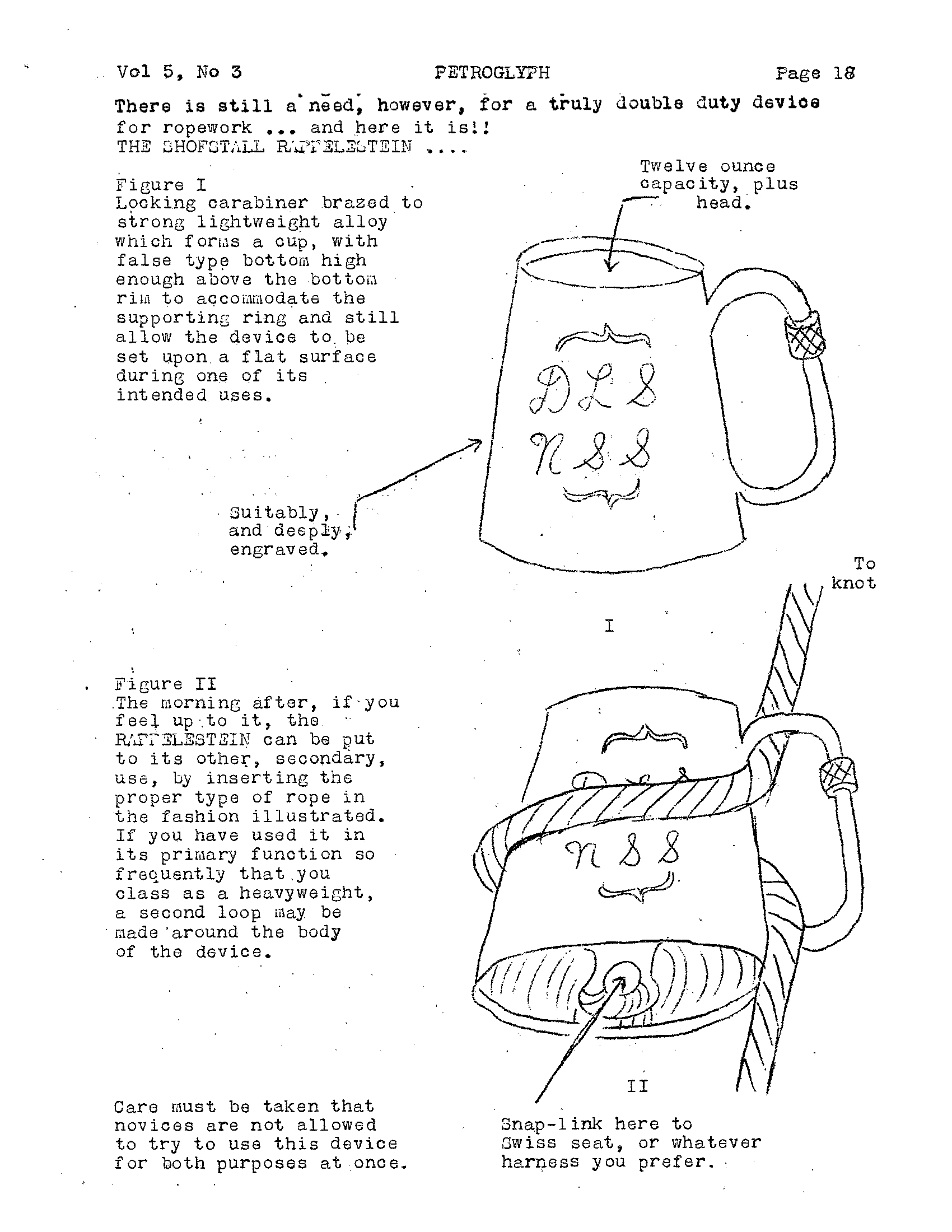 |
Don's Original Rappelestein.
Now in the N.S.S. Museum in Huntsville, AL |
Don Demonstrates His Rappelestein.
Steve Shofstall, 2007. "Don Shofstall" [obituary].NSS News, v. 65, #12, p. 26 |
The original Rappelestein article.
Shofstall, Don, 1965. "Carbide Chatter." Petroglyph, v. 5, #3, pp. 17-18 |
II. Tom Rea saw Don's Rappelestein and had a close copy made for himself. Don may have made the copy, perhaps not long after he made his original. After Tom's passing, Laura Demarest found his Rappelestein in a tote of miscellaneous caving items that his family returned to the caving community. Laura nabbed this after it was tossed aside by others who seemed confused by it. Tom's model matched Don's but "upgraded" to a locking carabiner. We believe that Don made this one for Tom, but that is not confirmed. The similar dimensions and construction argue against independent origins. It seems that Tom never rappeled on his, but Laura did before trading it to me in 2023.
III. Once I heard about the Rappelestein, I had one made for myself, sometime around 1979. This was probably the third Rappelestein. Don's original was much taller and smaller in diameter. Not having seen Don's at the time, I chose to make mine closer to customary drinking mug dimensions. Mine has a welded aluminum bottom.
IV. Brian Preaux made ten Rappelesteins around 1996 and shared them with his friends. His Rappelesteins were popular among Pittsburgh area
cavers. No self-respecting member of our club would go to a party
without one. In 2022, Brian gave me one of his Rappelestein in exchange for me finishing two more from parts that he had left over from his original production run.
V. Amy Skowronski and I made a dozen Rappelesteins in 2021. I did the machining and Amy Skowronski TIG-welded the pieces together. The online caver response was openly hostile, because the Rappelesteins "were not made from hypoallergenic materials" and "drinking from aluminum can lead to Alzheimer's."
VI. Laura Demarest agreed to give me Tom Rea's Rappelestein in exchange for a new one, and so Amy Skowronski and I made a five more in 2023. Once again, I did the machining and Amy Skowronski TIG-welded the pieces together. Three of the five had oval carabiner handles and the other two used locking carabiners. This time we followed the original's dimensions. Instead of cutting a through slot for the carabiners, I milled a round-bottom groove that did not penetrate to the inside. This makes cleaning easier. I used a polycarbonate disc for the bottom, glued it in place, and then sealed it with epoxy resin layers.

For far more content, use a larger monitor and a full-width window.
Hundreds of cell phone users complained and asked me to for a simpler, mobile friendly site. In particular, they wanted me to limit each page to a small number of pictures and minimize my use of text. This new site provides what they asked for.





